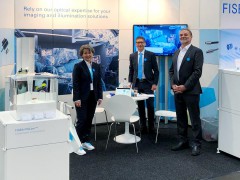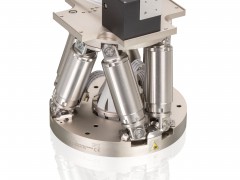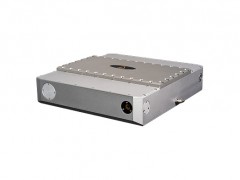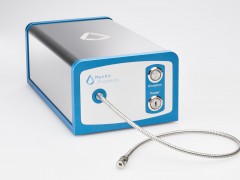
Research project works towards next stage for remote laser welding
source:Laser Focus World
release:Nick
keywords: remote laser welding optical coherence tomography (OCT)
Time:2018-01-06
The German government's clear goal is to advance electromobility. A look at the causes of very disappointing electric vehicle sales to date shows, for example, inflexible production structures that do not allow cost-efficient manufacturing of smaller volumes. Future production systems and bonding techniques need to work flexibly, adaptively, and with connectivity. To maximize efficiency and autonomy, machines will require much more information about their surroundings and the objects to be processed. This is precisely where contactless methods such as optical coherence tomography (OCT), combined with photonic sensors, offer tremendous potential for detecting orientation and status, assessing process results, and sharing and documenting this information within the manufacturing process.
Further development of these industrial advantages is the goal of a research project called Robot-Supported, Scanner-based Optical Coherence Tomography in Remote Laser Welding for Process Chain Flexibility in Body Construction (RoKtoLas). Project partners BMW (Munich, Germany), Blackbird Robotics (Garching, Germany), Precitec (Gaggenau, Germany), Emil Bucher (Mannheim, Germany), applicationtechnology (Nandlstadt, Germany), and the Technical University of Munich's Institute for Machine Tools and Industrial Management (IWB) are seeking an innovation leap through alternative bonding technology for raw body construction. The research project is sponsored by Germany's Federal Ministry of Education and Research under funding code 13N14551, and supported by the VDI Technology Center.
The project uses a Blackbird scanning system consisting of a scan head from affiliated company Scanlab (Puchheim, Germany) and an OCT scanner. The integrated OCT technology employs single-point high-speed distance measurement based on interferometry. Imaging relies on ultrafast workpiece scanning with a dedicated OCT scanner coaxially coupled in the weld scanner. This welding solution thus provides integrated edge tracking and seam topology measurement. Unlike other measurement methods, OCT-based distance measuring can acquire and evaluate detailed data with full flexibility ahead of, within, and past the actual laser process zone. This includes, for example, individual analysis of the to-be-welded components and seam tracking of fillet welds, as well as exact detection and parameterization of potential weld defects or imprecision during the weld process. Such data allows assessment of seam quality as well as detection and recording of defects such as inadequate width, penetration, open pores, and faulty positioning. This data can be used in a clock-period-neutral manner for quality assurance procedures that eliminate the need for downstream quality assurance steps.
Regarding the OCT method, Blackbird CTO Ulrich Munzert says that the research project now allows the project partners to accumulate practical experience on simplifying manufacturing approaches and processes while weighing them against alternatives.
- RoboSense is to Produce the First Chinese Multi-beam LiDAR
- China is to Accelerate the Development of Laser Hardening Application
- Han’s Laser Buys Canadian Fiber Specialist CorActive
- SPI Lasers continues it expansion in China, appointing a dedicated Sales Director
- Laser Coating Removal Robot for Aircraft
 FISBA exhibits Customized Solutions for Minimally Invasive Medical Endoscopic Devices at COMPAMED in
FISBA exhibits Customized Solutions for Minimally Invasive Medical Endoscopic Devices at COMPAMED in New Active Alignment System for the Coupling of Photonic Structures to Fiber Arrays
New Active Alignment System for the Coupling of Photonic Structures to Fiber Arrays A new industrial compression module by Amplitude
A new industrial compression module by Amplitude Menhir Photonics Introduces the MENHIR-1550 The Industry's First Turnkey Femtosecond Laser of
Menhir Photonics Introduces the MENHIR-1550 The Industry's First Turnkey Femtosecond Laser of Shenzhen DNE Laser introduced new generation D-FAST cutting machine (12000 W)
more>>
Shenzhen DNE Laser introduced new generation D-FAST cutting machine (12000 W)
more>>
